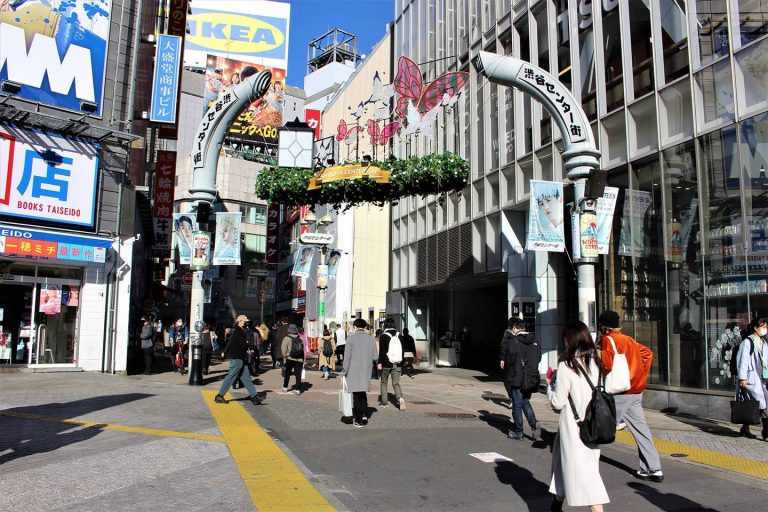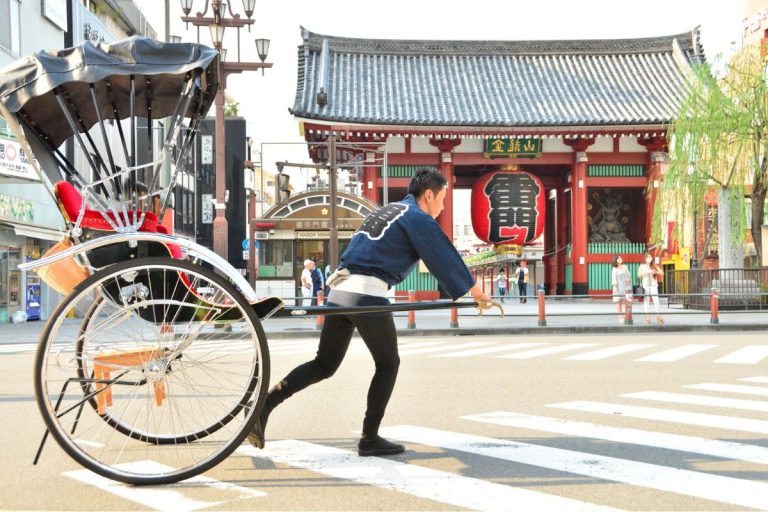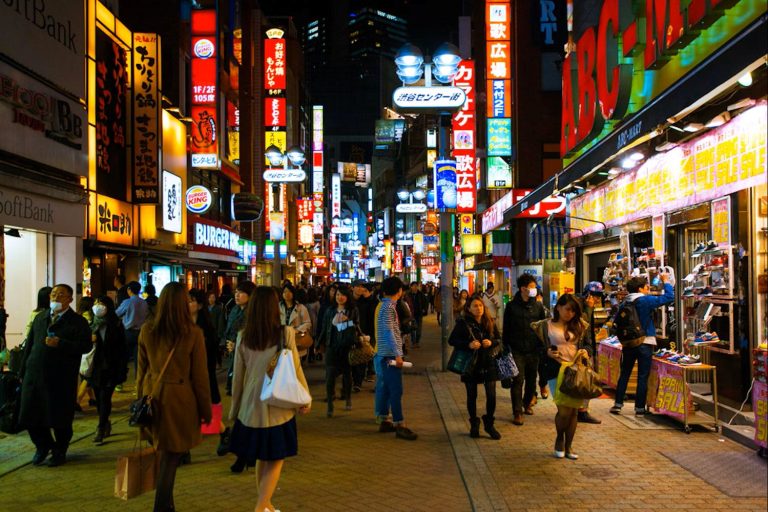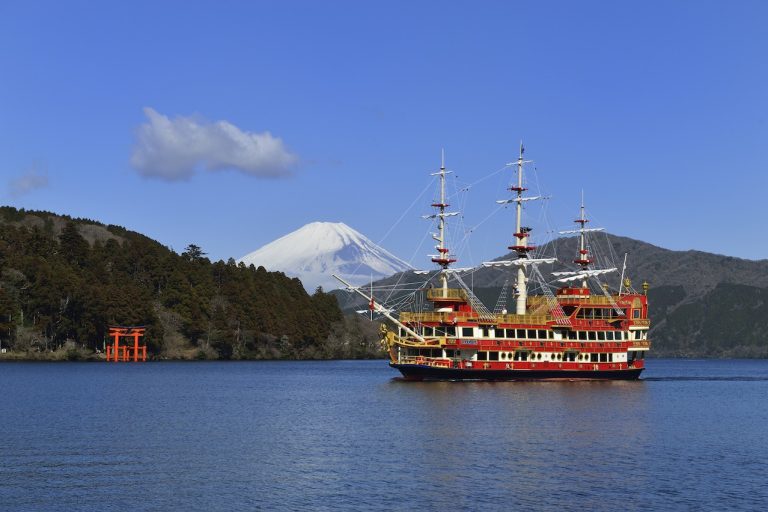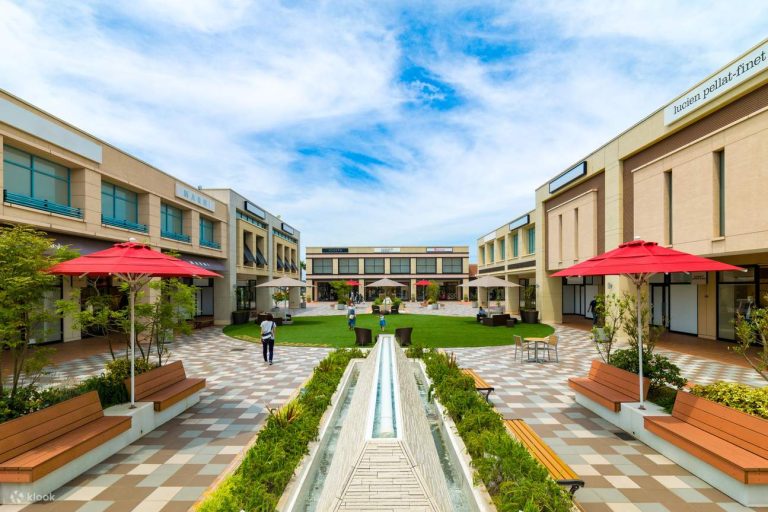Overview of Ikebukuro ↔ Ueno Service
The Ikebukuro to Ueno service represents one of Tokyo’s most vital transportation corridors, connecting two of the city’s major hubs through multiple transit options. This route serves millions of passengers annually, offering seamless connectivity between the bustling commercial district of Ikebukuro and the cultural heart of Ueno. Whether you’re a tourist exploring Tokyo’s attractions or a local commuter, understanding this service can significantly enhance your travel experience.
The service encompasses various transportation modes, from rapid trains to convenient bus routes, each designed to meet different travel needs and preferences. With real-time updates and comprehensive scheduling information, travelers can make informed decisions about their journey timing and route selection.
What is the Ikebukuro ↔ Ueno Service?
The Ikebukuro to Ueno service is a comprehensive transportation network that facilitates movement between these two strategic locations in Tokyo. This service includes multiple train lines operated by different railway companies, as well as bus services that provide alternative routing options. The primary rail connection utilizes the JR Yamanote Line, which forms part of Tokyo’s circular railway system, ensuring frequent and reliable service throughout the day.
Passengers can access this service through major stations equipped with modern amenities and clear signage in multiple languages. The service is designed to accommodate both short-distance travelers and those making connections to other parts of Tokyo or beyond.
Key Features of the Service
The service boasts several distinctive features that set it apart from other Tokyo transit options. Real-time scheduling updates ensure passengers receive accurate departure and arrival information, while integrated booking services allow for seamless travel planning. The system provides congestion forecasts, helping travelers avoid peak-hour crowds and plan more comfortable journeys.
Advanced route optimization tools enable passengers to compare different travel options, including time, cost, and convenience factors. The service also offers accessibility features for travelers with mobility challenges, ensuring inclusive transportation for all users.
Importance of This Route for Travelers
This route holds particular significance for both domestic and international travelers due to its strategic positioning within Tokyo’s transportation network. Ikebukuro serves as a major shopping and entertainment district, while Ueno is renowned for its museums, parks, and traditional attractions. The connection between these areas facilitates cultural exploration and commercial activities.
For tourists, this route provides access to some of Tokyo’s most popular destinations, including Ueno Park’s cherry blossoms and Ikebukuro’s anime culture centers. Business travelers benefit from the route’s efficiency in connecting commercial districts with cultural venues for client entertainment purposes.
Transit Options Available
Travelers between Ikebukuro and Ueno have access to multiple transportation modes, each offering unique advantages depending on individual preferences and circumstances. The diversity of options ensures that passengers can select the most suitable service based on factors such as travel time, cost, comfort, and scheduling flexibility.
The comprehensive transit network includes both rail and bus services, with each mode providing distinct benefits. Rail services typically offer faster travel times and higher frequency, while bus services may provide more scenic routes and direct access to specific destinations along the corridor.
Train Services Between Ikebukuro and Ueno
The primary train service connecting Ikebukuro and Ueno operates via the JR Yamanote Line, which provides frequent service throughout the day. This circular line ensures consistent connectivity with trains departing every few minutes during peak hours. The journey typically takes approximately 15-20 minutes, depending on the specific route and any transfers required.
Additional rail options include connections through other JR lines and Tokyo Metro services, which may offer alternative routing for passengers seeking specific destinations or avoiding crowded conditions. These services maintain high punctuality standards and provide comfortable seating arrangements.
Bus Services Overview
Bus services between Ikebukuro and Ueno offer an alternative transportation mode that can be particularly appealing for passengers carrying luggage or preferring surface-level travel. These services operate on scheduled routes with designated stops, providing predictable travel times under normal traffic conditions.
The bus network includes both local services that make multiple stops along the route and express services that minimize travel time. Similar to the Asakusa to Ueno local shuttle service, these buses provide convenient connections between major districts while offering passengers street-level views of Tokyo’s urban landscape.
Comparison of Travel Times
Travel times vary significantly between different transportation modes and service types. Train services typically offer the fastest option, with direct routes completing the journey in 15-20 minutes. Express train services may reduce this time further, while local services with multiple stops may extend the journey to 25-30 minutes.
Bus services generally require 30-45 minutes under normal traffic conditions, though this can extend significantly during peak hours or adverse weather conditions. The choice between speed and comfort often influences passenger decisions regarding their preferred transportation mode.
Travel Schedules and Frequency
Understanding the scheduling patterns and frequency of services between Ikebukuro and Ueno is crucial for effective travel planning. The service operates on a comprehensive schedule that accommodates various travel patterns, from early morning commuters to late-night entertainment seekers. This extensive scheduling ensures that passengers have reliable transportation options throughout the day.
The frequency of services varies based on time of day, with peak hours featuring the highest frequency to accommodate increased passenger demand. Off-peak periods maintain regular service intervals while providing more comfortable travel conditions due to reduced crowding.
Daily Schedule Overview
Daily operations typically begin around 5:00 AM and continue until approximately midnight, providing nearly 19 hours of continuous service. The first trains of the day cater to early commuters and travelers catching morning flights or appointments. Service frequency gradually increases throughout the morning, reaching peak levels during rush hours.
Evening services maintain high frequency until late hours to accommodate entertainment and dining activities in both districts. Weekend schedules may vary slightly, with adjusted timing to reflect different travel patterns and reduced commuter demand.
Peak and Off-Peak Times
Peak travel times typically occur during morning rush hours (7:00-9:00 AM) and evening rush hours (5:00-7:00 PM), when commuter traffic reaches maximum levels. During these periods, services operate at maximum frequency with trains departing every 2-3 minutes on major lines.
Off-peak periods offer more comfortable travel conditions with reduced crowding and longer intervals between services. Mid-day and late evening travel often provides the most pleasant experience for tourists and leisure travelers.
Real-Time Updates on Service Status
The service provides comprehensive real-time information through various channels, including mobile applications, station displays, and online platforms. These updates include current service status, delay notifications, and alternative routing suggestions during disruptions.
Passengers can access congestion forecasts that predict crowd levels at different times and stations, enabling better travel planning. This information proves particularly valuable during special events, weather disruptions, or maintenance activities that might affect normal operations.
Route Optimization Features
Modern transportation services between Ikebukuro and Ueno incorporate advanced route optimization features designed to enhance passenger experience and travel efficiency. These technological innovations provide travelers with comprehensive tools for planning, booking, and managing their journeys across Tokyo’s complex transportation network.
The optimization features extend beyond simple route planning to include integrated services that address various aspects of urban travel, from initial planning stages through final destination arrival. These tools leverage real-time data and predictive analytics to provide personalized recommendations.
Integrated Booking Services
The service offers comprehensive booking integration that extends beyond basic transportation tickets to include accommodations, dining reservations, and experience tickets for popular attractions. This integration streamlines the travel planning process by allowing passengers to coordinate multiple aspects of their journey through a single platform.
Booking services include options for advance reservations, group bookings, and special event transportation. The system also provides package deals that combine transportation with popular tourist attractions or dining experiences in both the Ikebukuro and Ueno areas.
Tools for Efficient Travel Planning
Advanced planning tools provide passengers with detailed route comparisons, including factors such as travel time, cost, comfort level, and accessibility features. These tools consider real-time conditions, including traffic congestion, weather impacts, and service disruptions, to provide accurate travel recommendations.
The planning interface allows users to set preferences for their journey, such as minimizing walking distance, avoiding crowded periods, or prioritizing scenic routes. Much like planning for Tokyo Disney Resort shuttle services, these tools help optimize the entire travel experience.
Route Comparison for Multiple Destinations
One of the most valuable features is the ability to compare routes when traveling to multiple destinations beyond the basic Ikebukuro-Ueno corridor. The system can optimize complex itineraries that include stops at various Tokyo attractions, shopping districts, or business locations.
This feature proves particularly useful for tourists planning comprehensive Tokyo exploration or business travelers with multiple meeting locations. The system considers factors such as operating hours, crowd levels, and connection times to create efficient multi-stop itineraries.
Accessibility and Convenience
The Ikebukuro to Ueno service prioritizes accessibility and convenience for all travelers, regardless of physical abilities, language barriers, or travel experience. These features ensure that the transportation system remains inclusive and user-friendly for Tokyo’s diverse population and international visitors.
Accessibility improvements continue to evolve, incorporating feedback from users and advances in assistive technology. The service maintains high standards for barrier-free access while providing additional convenience features that enhance the overall travel experience.
Accessibility Options for All Travelers
Comprehensive accessibility features include elevator access at all major stations, tactile guidance systems for visually impaired passengers, and audio announcements in multiple languages. Wheelchair-accessible train cars and buses ensure that mobility-impaired passengers can travel comfortably and independently.
Station staff receive specialized training to assist passengers with various accessibility needs, and dedicated customer service lines provide support in multiple languages. Visual and audio information systems accommodate passengers with different sensory abilities.
Convenient Stops Along the Route
Strategically located stops along the route provide access to major shopping centers, cultural attractions, and business districts. These stops are designed with passenger convenience in mind, featuring clear signage, comfortable waiting areas, and protection from weather conditions.
Intermediate stops offer connections to other transportation lines, enabling passengers to reach destinations throughout Tokyo efficiently. Similar to how the Yokohama City Loop Bus connects various city attractions, these stops facilitate exploration of different neighborhoods and districts.
Parking and Gas Station Information
For travelers who prefer to drive part of their journey, the service provides comprehensive information about parking facilities near stations and gas stations along alternative routes. This information includes real-time availability, pricing, and reservation options for parking spaces.
Integrated mapping services show the locations of gas stations, electric vehicle charging points, and parking facilities, enabling travelers to plan multi-modal journeys that combine driving with public transportation for optimal convenience and cost-effectiveness.
Travel Management Tools
Sophisticated travel management tools cater to both individual travelers and business users, providing customized solutions for different travel needs and preferences. These tools leverage data analytics and user behavior patterns to offer personalized recommendations and streamlined booking processes.
The management system recognizes that business and personal travel have different requirements, offering specialized features and interfaces for each use case. This differentiation ensures that all users can access relevant tools and information efficiently.
Personal vs. Business Travel Management
Personal travel management focuses on leisure activities, cost optimization, and flexible scheduling options. The system provides recommendations for tourist attractions, dining options, and entertainment venues along the route, similar to planning visits to areas accessible via the Ikebukuro to Odaiba waterfront route.
Business travel management emphasizes efficiency, reliability, and integration with corporate travel policies. Features include expense tracking, receipt management, and coordination with business calendars to ensure seamless integration with professional schedules.
Data-Driven Insights for Travelers
The service collects and analyzes travel patterns to provide valuable insights that help passengers optimize their journeys. These insights include recommendations for optimal travel times, alternative routes during disruptions, and seasonal variations in service patterns.
Personalized analytics help frequent travelers identify patterns in their travel behavior and suggest improvements for time savings, cost reduction, or comfort enhancement. The system learns from user preferences and feedback to continuously improve recommendation accuracy.
Experience Ticket Options
Specialized ticket packages combine transportation with access to popular attractions, dining experiences, or cultural events. These packages often provide cost savings compared to purchasing individual components separately while simplifying the booking and payment process.
Experience tickets may include themes such as cultural exploration, culinary tours, or shopping expeditions, each designed to maximize the value and enjoyment of travel between Ikebukuro and Ueno while encouraging exploration of both districts.
Traffic Conditions and Congestion Forecasts
Understanding traffic patterns and congestion forecasts is essential for travelers choosing between different transportation modes or planning journey timing. The service provides comprehensive traffic information that helps passengers make informed decisions about their travel options.
Advanced forecasting systems analyze historical data, current conditions, and predictive models to provide accurate congestion predictions for different times and routes. This information proves invaluable for both public transportation users and those considering alternative travel methods.
Understanding Congestion Forecasts
Congestion forecasts utilize multiple data sources, including historical travel patterns, special events, weather conditions, and real-time traffic monitoring. These forecasts provide probability-based predictions for crowding levels on trains and buses, as well as traffic conditions for road-based alternatives.
The forecasting system updates continuously throughout the day, providing passengers with current information that reflects changing conditions. Color-coded indicators and numerical ratings make it easy for travelers to quickly assess congestion levels and adjust their plans accordingly.
Traffic Conditions Impacting the Route
Various factors can impact traffic conditions along the Ikebukuro-Ueno corridor, including construction projects, special events, weather conditions, and seasonal variations. The service monitors these factors continuously and provides updates about their potential impact on different transportation modes.
Major events in either district can significantly affect both public transportation crowding and road traffic, requiring passengers to plan alternative routes or adjust their travel timing. The system provides advance notice of known disruptions and suggests optimal alternatives.
Tips for Avoiding Traffic Delays
Strategic timing represents the most effective method for avoiding traffic delays and crowded conditions. Traveling during off-peak hours, typically mid-morning or mid-afternoon, provides the most comfortable experience with minimal delays.
Alternative routing options, such as taking express services or using different transportation modes, can help passengers avoid congested areas. The system provides real-time recommendations based on current conditions and predicted developments throughout the day.
Dining and Leisure Options Nearby
Both Ikebukuro and Ueno offer extensive dining and leisure opportunities that enhance the travel experience beyond simple transportation. Understanding these options helps travelers plan comprehensive visits that maximize their time in each district while enjoying local culture and cuisine.
The diversity of dining and leisure options reflects Tokyo’s rich cultural landscape, from traditional Japanese experiences to international cuisine and modern entertainment venues. These options cater to various budgets, preferences, and time constraints.
Dining Options Around Ikebukuro
Ikebukuro’s dining scene encompasses everything from traditional ramen shops and sushi restaurants to international cuisine and themed dining experiences. The district’s numerous department stores feature extensive restaurant floors offering diverse culinary options in convenient locations near transportation hubs.
Popular dining areas include the underground restaurant networks connected to major stations, rooftop dining districts with city views, and specialized food markets that showcase regional Japanese cuisine. Many restaurants offer English menus and accommodate international dietary preferences.
Leisure Activities Near Ueno
Ueno’s leisure activities center around its famous park complex, which houses multiple museums, a zoo, and seasonal attractions such as cherry blossom viewing areas. The district combines cultural education with recreational activities, making it ideal for both learning and relaxation.
Traditional shopping streets near Ueno Station offer authentic Japanese retail experiences, while the area’s numerous temples and shrines provide cultural immersion opportunities. The district also features modern entertainment venues and seasonal festivals that celebrate Japanese traditions.
Recommendations for Travelers
Optimal travel planning combines transportation efficiency with strategic stops for dining and leisure activities. Travelers can maximize their experience by coordinating meal times with off-peak transportation periods, reducing both crowding and wait times.
Seasonal considerations play important roles in activity planning, with spring cherry blossoms in Ueno Park and summer festivals throughout both districts offering unique experiences. Advanced booking for popular restaurants and attractions ensures availability and reduces waiting times during busy periods.
Frequently Asked Questions
What transportation options are available between Ikebukuro and Ueno?
Travelers can choose from multiple transportation modes, including the JR Yamanote Line train service, additional rail connections, and various bus services.
How long does it take to travel from Ikebukuro to Ueno?
The train journey typically takes 15-20 minutes, while bus services may take 30-45 minutes, depending on traffic conditions.
Are there accessibility features available for travelers?
Yes, the service offers various accessibility features, including elevator access, tactile guidance systems, and wheelchair-accessible vehicles.
What are the peak travel times for this route?
Peak travel times typically occur during morning rush hours (7:00-9:00 AM) and evening rush hours (5:00-7:00 PM).
Can I get real-time updates about the service status?
Yes, the service provides real-time information through mobile apps, station displays, and online platforms.
Enhancing Travel Between Ikebukuro and Ueno
Navigating between Ikebukuro and Ueno is made easier through a comprehensive transit network that prioritizes efficiency, accessibility, and passenger experience. This vital connection not only serves daily commuters but also enriches the cultural and commercial interactions within Tokyo, making it an essential route for all travelers.
